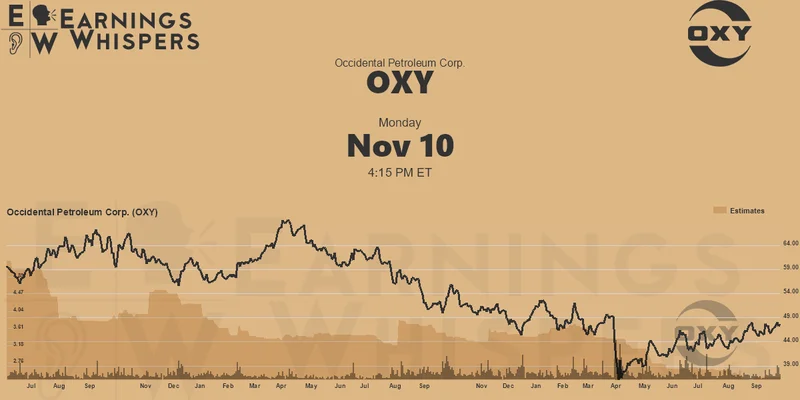360° Financial Trend Detection
360° Financial Trend Detection
The market reaction to the Berkshire Hathaway-Occidental Petroleum deal was, in a word, predictable. Occidental’s stock (OXY) climbed on the news that its chemical division, OxyChem, was being sold to Warren Buffett’s conglomerate for a reported $9.7 billion. On forums like Stocktwits, the qualitative data showed a rapid sentiment shift to “extremely bullish.” This is the standard Pavlovian response to any headline containing the words “Berkshire” and “acquisition.” The narrative is simple: the Oracle of Omaha sees value, so value must exist.
But a company’s press release is a narrative. A balance sheet is a confession. And Occidental’s balance sheet has been confessing its sins for years. This transaction is not the straightforward vote of confidence the market perceives it to be. It is a carefully orchestrated exercise in financial triage, born of necessity, executed by a master of opportunism.
To understand the sale of OxyChem, one must first ignore OxyChem. The story begins with debt. As of the last quarter, Occidental was laboring under a debt load north of $20 billion—to be more exact, it stood at $22 billion at the end of the June quarter. This isn't legacy debt from a bygone era; it's the direct, quantifiable result of two massive, leveraged bets. The first was the $10 billion it took from Berkshire in 2019 to help finance its acquisition of Anadarko Petroleum. The second was the more recent purchase of CrownRock in 2024. Occidental’s management has been vocal about its goal to reduce principal debt to below $15 billion, and while they’ve made progress chipping away about $7 billion through free cash flow and other sales, the pressure from that remaining mountain of obligations is immense, especially in the current energy market.
With OPEC+ consistently signaling production increases to capture market share, the macro environment for oil producers is defined by downward price pressure. We’ve seen the consequences ripple through the industry: Chevron laying off 20% of its workforce, ExxonMobil cutting 2,000 jobs, and TotalEnergies embarking on a multi-billion dollar cost-saving plan. In this climate, servicing a massive debt load becomes exponentially more difficult. A volatile revenue stream from oil and gas is a poor foundation upon which to build a de-leveraging strategy. Occidental needed certainty. It needed a large, immediate cash infusion. And it had one major creditor with a vested interest and a very large checkbook.
A Creditor Collecting His Collateral

This brings us to Berkshire Hathaway’s role, which has been consistently mischaracterized since 2019. The $10 billion Berkshire provided for the Anadarko deal wasn't just an investment; it was expensive financing that came with an 8% preferred stock dividend and warrants to acquire nearly 84 million shares. It was less a "seal of approval" and more a high-interest loan from the world's most powerful pawn shop. Berkshire already owns a substantial stake in Occidental Petroleum (reported at 26.91% as of June 2025), giving it significant influence.
Now, with Occidental needing to make a major move on its debt, Berkshire is not simply buying an asset. Analysis suggests the most likely structure for this deal involves Berkshire swapping its existing preferred stock holdings to fund the acquisition. This is a brilliant, capital-efficient move for Berkshire. It essentially converts a high-yield debt instrument on Occidental’s books into full ownership of a robust, cash-generating operating business. For Occidental, it extinguishes a costly obligation. For Berkshire, it’s like trading a loan for the borrower’s house.
And this is the part of the transaction I find genuinely telling. Companies don’t typically sell their most reliable, non-cyclical revenue streams unless the pressure to de-leverage is acute. OxyChem is a fundamentally strong business, generating roughly $5 billion in revenue over the last twelve months. Its products—used for disinfecting water, manufacturing paper, and recycling batteries—are tied to broad industrial demand, providing a crucial hedge against the wild price swings of crude oil. It is, by all accounts, a crown jewel of stability within Occidental’s portfolio. Selling it to focus more on oil and gas exploration isn’t a strategic pivot toward strength; it’s a forced amputation to save the whole.
The market’s excitement, therefore, seems misplaced. The retail sentiment flipping to "extremely bullish" is a reaction to a name, not an analysis of the underlying mechanics. It ignores the fact that Occidental is selling a predictable, high-performing division to pay for the sins of past acquisitions. The price itself, valued around $10 billion, seems reasonable when viewed against 2023 and 2024 earnings ($1.5 billion and $1.1 billion, respectively), but it looks slightly expensive against this year’s projected pre-tax earnings of $850 million. This suggests Berkshire is paying a fair, but not extravagant, price for a premium asset at a time when the seller has very little leverage. This is not a rescue. It is a transaction. And in any transaction with Warren Buffett, it is wise to assume he is not the one in distress.
The narrative of a strategic partnership and a renewed focus for Occidental is compelling corporate storytelling. But the numbers tell a story of constraint. This deal stabilizes Occidental’s balance sheet, which is a necessary and positive step. However, it does so at the cost of its most stable asset, leaving the company more exposed, not less, to the volatility of the energy markets. The market is cheering because the patient’s bleeding has stopped, but it’s ignoring the fact that the patient sold a vital organ to pay the surgeon.
Reference article source: